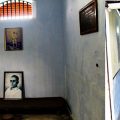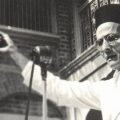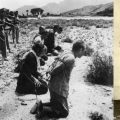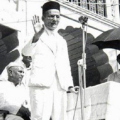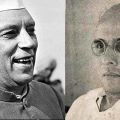Veer Savarkar: The Misinterpreted Legacy and Roots of an Ideology
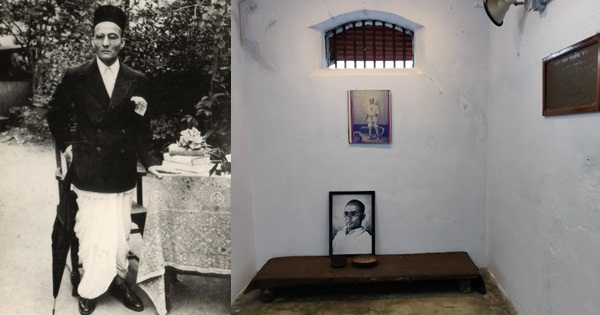
Vinayak D. Savarkar is a name that we all are familiar with. The name casts an impression upon the consciousness of people in two different ways: For his followers, Savarkar was an Indian independence activist, politician, lawyer, writer, and the formulator of the Hindutva philosophy. The other bunch considers him to be a conspirator who conspired to assassinate the father of our nation, Mahatma Gandhi. Both the mainstreams, whether negative or positive made Savarkar, a household name. This article is an attempt on my part to rise above all the presuppositions and considerations and to reconstruct an early phase of Savarkar’s life. V.D. Savarkar is an icon in his own rights and to deal about his life will need a book. So in this article, I would restrict myself till the point of Savarkar’s emergence as a revolutionary Patriot and not beyond.
Veer Savarkar was born in the year 1883, in the village of Baghur, located outside the town of Nasik in Maharashtra. He belonged to the family of Chitpavan Brahmins. Damodar, Vinayak’s father had a religious bent of mind and adopted the Hindu scriptures wholeheartedly and kept a strict household. Vinayak had three siblings – Ganesh, the oldest; Mainabai, the second youngest, and Narayan, the youngest. Owing to his parents pious and devout lifestyle, Vinayak encountered early to the texts of Ramayana and Mahabharata, often read aloud in the evenings by Damodar or his children. This atmosphere prevailing within home led Savarkar to be in psychological touch with many epic heroes of Hindu Culture, but the one who attracted him the most was Shivaji, The Hindu warrior from Maharashtra, the man who single -handedly resisted Mughal imperialism in the second half of the 17th century, Kindled in Savarkar the seeds of the future revolutionary.
Vinayak, at the age of nine, lost his mother to cholera, creating an emotional void which Savarkar will recount in the later days of his life. He was very close to her. Damodar, to his credit, after his wife’s death, took up the mantle, and became an attentive and loving father to his four children. The void created by his mother’s death and a mix bag of feelings led Savarkar to write both poetry and prose since an early age and around this time; he started penning down his first couplets and prose. Savarkar was a fervent admirer of Lokmanya Tilak’s Marathi newspaper Kesari. Ironically, it was Tilak who supported Savarkar in his journey for the scholarship to study in London.
In 1893, at the age of ten, Savarkar was engaged in his first freedom struggle activity in an event which would spell a glimpse of his future work as a champion of the Hindu Cause. Dhananjay Keer, his biographer, recorded that at the time when the communal tension between Hindus and Muslims flared in the (then) United provinces and Bombay (today’s Uttar Pradesh and Maharashtra, respectively),
“The boy Savarakar led a batch of selected schoolmates upon the village mosque. The battalion of these boys showers stones upon it, shattered its windows and tiles and returned victorious…The victory, however, was not allowed to go unchallenged. The Muslim school boys gave battle to Vinayak, the Hindu Generalissimo. Although the number of his soldiers decreased at the time of Joining the battle, Vinayak routed the enemy with missiles like Pins, Penknives and thorns….”
The story may be an exaggeration to sketch a compelling image of Savarkar as the champion of the Hindu cause, but it can not be discarded that an event of similar facts may have occurred and the same reflected the Commitment Savarkar felt to defend his fellow Hindus, from an early age.
In 1896, the plague unfurled like a wildfire through Maharashtra. The fuel to the fire being the mishandling of the entire situation by the British administration, left the Maharashtrians disgruntled. Among the masses, were the Chapekar Brothers of Poona, who, disgruntled and dejected, killed the British Commissioner and another British officer in June 1897. According to Keer, “this event led to a widespread reaction on the part of the Indian people against the injustices of British”. The British pounded upon the reactionary masses with a heavy hand:- Tilak was jailed and the Chapekar brothers eventually hanged. Keer records, that all these events had a strong impact upon Vinayak: “Sitting at the feet of the armed Goddess Durga at dead of night, he took a vow of striving nobly and sacrificing his nearest and dearest, his life and all, to fulfill the incomplete mission of the martyred Chapekars. He vowed to drive out the British from his beloved Motherland…”
Ganesh, Vinayak’s elder brother, was also a freedom fighter and may have played a pivotal role in fostering the spirit of the fight for India’s Independence in his younger brother. In 1899, Vinayak lost his father Damodar to the plague that had engulfed multitudes. Subsequently, Vinayak and his siblings were taken in by his elder brother Ganesh and his new wife, and this well may be contested as the turning point in Vinayak’s life. In 1901, Savarkar and his elder brother founded “Mitra Mela”, while Savarkar was enrolled in High School in Nasik. This would be the first of many revolutionary societies with which Savarkar was associated. Though the activities of Mitra Mela were on a small scale, Janaka Bakhle records “{it} was a consciousness raising society, holding more lectures than anything else.” Mitra Mela, can be described as the young Savarkar’s symbolic first foray into the world of political activities, also the first occasion where he came in close contact with the local authorities.
During this period, Savarkar engrossed in History, especially in the lives of previous revolutionaries. Savarkar wanted his friends and fellow members of the society to be connected with his ideal of anti-colonialism and encouraged them to “read works dealing with major historical figures, biographies of Mazzini, Garibaldi, Napoleon Bonaparte, and along the way, study a little bit of Spencer and Mill”. Among all the revolutionaries and epic heroes, two figures always cast upon Savarkar a spell which lasted till the end, Shivaji and Mazzini, both of whom he wrote about later in life. Savarkar absorbed history to rectify the present. What makes a striking difference between Savarkar and the later revolutionaries was that that Savarkar was inspired by the works of great Italian revolutionaries mixed with national heroes, whereas the cult of Later Revolutionaries were inspired by the Marxist-Leninist ideology and the Russian revolution. Savarkar propounded, that by reading about this great revolutionaries of the past, one would connect the need for a revolt in the present. During Savarkar’s stay in London under the tutelage of Shyamji Krishnavarma, the works of the likes of Herbert Spencer and other sociologists and philosophers, would leave a permanent mark upon Savarkar’s ideology.
In 1902, Savarkar shifted to Pune to attend Fergusson College. It was in Poona that “Mitra Mela” gradually transformed into the “Abhinav Bharat”, a group having national recognition. Savarkar, with gifted intellectual abilities and rhetoric skills, transformed into an adroit leader, encouraging and inspiring all around him to join in his struggle against the colonial powers. Though, it would be an exaggeration on my part but still I cannot restrict myself from forwarding this proposition, that somewhere and to an extent Savarkar was inspired to form the society on the lines of Mazzini’s “Young Italy”, a similar revolutionary group of young people founded in 1831. “Abhinav Bharat” advocated a boycott of foreign goods and extended strong support to the Swadeshi movement. In 1905, The principles of “Abhinav Bharat” were reduced to action, when Savarkar organized the first bonfire of foreign – made clothes in India, and planned to have Lokmanya Tilak as a speaker at an event.
In 1906, Savarkar received a scholarship to study at India House – a hostel for Indian students in London run by Shyamji Krishnavarma, who encouraged his students to rise against the Colonial imperialism and worked towards the same goal by instilling in his students the ideology of anti-British. Lokmanya Tilak was the one sending a letter of recommendation to Krishnavarma about Savarkar. In the application for Scholarship, Savarkar made a notable statement which would cast a glimpse of his future activities that he was to undertake in London in the next few years : “Independence and Liberty I took upon as the very pulse and breath of nation. From my boyhood, dear sir, upto this moment of my youth, the loss of Independence of my country and the possibility of regaining it form the only theme of which I dream by night and on which I mused by day.” The script had already been written just the right and proper environment was needed to groom his revolutionary aspirations.
Savarkar in London
As I emphasized earlier, Savarkar’s stay at India House and the mentorship of Shyamji Krishnavarma made Savarkar who he was. Krishnavarma, a revolutionary himself, mentored the young Vinayak, and inducted him to the secret society of like-minded Indian students living in England. India House, had the privilege of being a haven for young freedom fighters, and with Savarkar in ranks, the temperament of the house became more focussed. In 1905, India Home rule society was founded by Krishnavarma, aimed at the independence of India. Savarkar quickly rose through the ranks. Shyamji Krishnavarma also published an English monthly newspaper The Indian Sociologist, serving as a mouthpiece for political, religious and social issues. In this paper, for the first time, Krishnavarma proposed his beliefs and ideas about the Indian independence, and also touted his immense respect for Herbert Spencer.
As I recorded earlier, Spencer had an immense impact upon the young Savarkar’s mind and owing to which Savarkar’s ideology evolved upon the same premises. The same thought process cemented when Savarkar became a part of the India House. Krishnavarma, as he was a fervent follower of Spencer, at Spencer’s funeral in 1903, announced his objectives to donate a large sum of money to the Oxford University for establishing “Herbert Spencer fellowship”. Moreover, Paul Schaffel recorded in his thesis “Empire and Assassination – Indian Students, India House, and Information Gathering in Great Britain, 1898-1911,” Krishnavarma subsumed two quotes from Spencer at the heading of each edition of the ” Indian Sociologist”: ” Every man is free to do that which he wills, provided he intrigues not the equal freedom of any other man,” and ” Resistance to aggression is not simply justifiable but imperative. Non- Resistance hurts both altruism and egoism.” The step was in a way to both acknowledge and merge his British readership, also to showcase Krishnavarma’s knowledge of British intellectual History, discarding critics, who would otherwise write him off as distinctly un-western. It applies to mention here, that the atmosphere in London, around the turn of the century – was a favourable ground for Indian students interested in revolutionary activities. This does not discount the fact that the Indian Government was brutally oppressive, used widespread surveillance and censorship to strike upon the radicals in the Country, but the British in Britain acted more liberally. To be arrested for revolutionary activities in London was much more difficult than being arrested in India. Nicholas Owen summed it up rather eloquently, ” in contrast to those in India, were, if not exactly tolerant of Indian radicalism, opposed to policing it”. He further added that , “discussion of Politics was …not controlled as it was in India.” So it would not be unjustified to state that when Savarkar arrived in London, the city was a breeding ground for young Indian Revolutionaries. In the following years, however, there was an abrupt shift in the liberal approach of the Government towards Indian students, to an extent, owing to the activities of Savarkar and his followers.
Savarkar, soon after he arrived in London, took charge of the Indian Home Rule Society, and in a few months, changed its name to the Free Indian Society. Savarkar, desired to transform this group into a more modern European outfit, the ideals remaining the same, while the members of the “Abhinav Bharat” being absorbed. In 1907, a year after his arrival in England, there was a turnaround in the sequence of events, as Krishnavarma fled to Paris to evade arrest for his statements made in the publication and the leadership of the India House passed to Savarkar. Though, Krishnavarma continued to publish his English monthly The Indian Sociologist from Paris, but now it was Savarkar who would play the lead role regarding the Indian revolutionary activities in Great Britain, especially those which were doctored from the India House. Now, This new position helped Savarkar to advance his own, more radical ideas to deal with the British yoke. The transition to the Free India society was only the beginning.
In 1907, Savarkar wrote and circulated an immensely patriotic pamphlet Oh Martyrs, during the celebration of the anniversary of the First War of Independence 1857, in London. The article praised the Indian bravery and empathize with the sacrifice of the Indian Leaders. The leaflet reflected Savarkar’s impeccable rhetorical skills, but soon it became notorious within the revolutionary circle, attracting the British authorities. Let me quote an excerpt from the leaflet which would portray the tone of the author and the “Flare” it produced, Savarkar writes:
“We take up your cry, we revere your flag, we are determined to continue that fiery mission of ‘away with the foreigner,’ which you uttered, amidst prophetic thunderings of the revolutionary war. Revolutionary, yes, it was a Revolutionary war. For the War of 1857 shall not cease till the revolution arrives, striking slavery into dust, elevating liberty to the throne.”
So, Savarkar is straight to the point and there is no attempt on his part to hide his emotions and the fiery language reflects Savarkar’s unapologetic devotion to the cause, regardless of the consequences. Bakhle notes, in her essay on police surveillance during the period, the British police came to know of the leaflet within a month of its publication, and the police quickly connected the dots and that Savarkar was the Successor of Krishnavarma and his “Notorious” revolutionary rhetoric. Though the connection was established, still Savarkar never felt the wrath of the authorities for the next two years but the level of Surveillance increased on him. The freedom from the immediate fetters afforded by British Liberalism provided Savarkar with the exact environment that would transform him into a full – fledged radical. It was in London between 1906-1910 emerged the Savarkar, the revolutionary, the man who would rise to be one of the notable figures of the Indian Independence movement.
In 1909, Savarkar published his famous work, The Indian War of Independence, which added to his already attained fame and also brought him under the scanner of the Authorities and as a result police Surveillance increased. This work was a re-projection of the 1857 event from the viewpoint of an Indian, which was characterised by the British, a military mutiny that soon grew to a widespread civil rebellion. The Government acted immediately and put an embargo on it, but like other revolutionary works, The Indian War of Independence was widely circulated by the underground Indian revolutionary groups within Great Britain and was well received, it was also illegally smuggled into India. The work changed forever the way the Indians viewed the 1857 mutiny, and still continues to be recognized as an authoritative work, despite gaps in its author’s scholarly analysis.
Savarkar goes on to observe:
“….the raising of Bahadur Shah to the throne was no restoration { of Muslim Power} at all. But rather it was the declaration that the long-standing war between the Hindu and the Mahomedan had ended, that tyranny had ceased, and that the people of the soil were once more free to choose their own monarch. For, Bahadur Shah was raised by the free voice of the people, both Hindus and Mahomedans…”
Bakhle, during her analysis of the work, observes: ” in chapter after chapter, he noted that 1857 had ushered in a new era – in particular the end in perpetuity of Hindu – Muslim enmity – and he imagined a future for India with two distinct religious communities bound together in an unshakable entity.”
To say, that Savarkar was an anti-Muslim would do injustice to the Noble soul, it may be said that he may have few reservations to an extent, but he never suffered from any prejudices and was relatively open – minded. When Savarkar was writing “The Indian War of Independence,” the Morley- Minto reforms of 1909 had not yet been passed. This reform provided for separate electorates for Muslims in India, an issue which would be a bone of contention between Hindu Nationalists and members of the Muslim League in later years.
In my next article, I would try to focus upon the points, which shifted Savarkar’s focus and eventually led to the Publication of “Hindutva: Who is a Hindu?” In 1923.
References:-
1. Dhananjay Keer, Veer Savarkar, 2d ed. ( Bombay: Popular Prakasha, 1966).
2. Janaki Bhasle, “Savarkar (1883-1966), Sedition and Surveillance: The Rule of Law in a Colonial Situation”, Social History 35, no.1 (2010): 56
3. Paul Schaffel, “Empire and Assasination: Indian Students, ‘ India House’, and Information Gathering in Great Britain, 1898-1911” (Wesleyan University, 2012), 28.
4. Nicolas Owen, “The Soft Heart of the British Empire: Indian Radicals in Edwardian London,” Past & Present 220, no.1 (2013): 173.
5. V.D. Savarkar. ” Oh Martyrs,” London 1908.
6. Vinayak Damodar Savarkar, “The Indian War of Independence of 1857 ( London 1909), 234.
I owe my gratitude to Manoshi Mam for inspiring me with my work, Vikram Sampath sir, for introducing Savarkar to me in a new light and Ms. Bandana Singh for encouraging me in my endeavours.
Featured image courtesy: thedemocraticbuzzer.com and Google.

